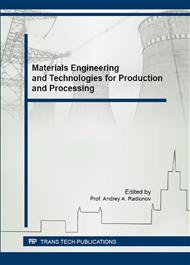p.225
p.231
p.236
p.242
p.248
p.253
p.259
p.263
p.269
Intercritical Quench Hardening of Structural Pipeline Steels
Abstract:
The paper considers the effect of low-carbon pipeline steels initial condition on their mechanical properties and structure after quench hardening at different temperatures in the intercritical temperature range Ac1–Ac3 (ITR) followed by tempering at 600 °C. If the prior heat treatment is annealing or normalizing , which produces the ferrite-pearlite structure, then quenching from temperatures just above Ac1 causes very strong embrittlement due to the formation of a high-carbon austenite film at ferrite/pearlite boundaries. Increasing quenching temperature in the intercritical range increases impact toughness and ductile fracture fraction for both types of prior treatment, though normalizing provides higher impact toughness than annealing. On the contrary, if the prior heat treatment is quench hardening, then the highest impact toughness is observed when the second quenching temperature lies a little above Ac1. Impact toughness and ductile fraction for preliminarily quenched samples gradually decreases along with the increase in austenitization temperature in the intercritical range.
Info:
Periodical:
Pages:
248-252
Citation:
Online since:
February 2016
Authors:
Price:
Сopyright:
© 2016 Trans Tech Publications Ltd. All Rights Reserved
Share:
Citation:


